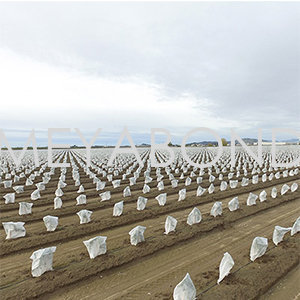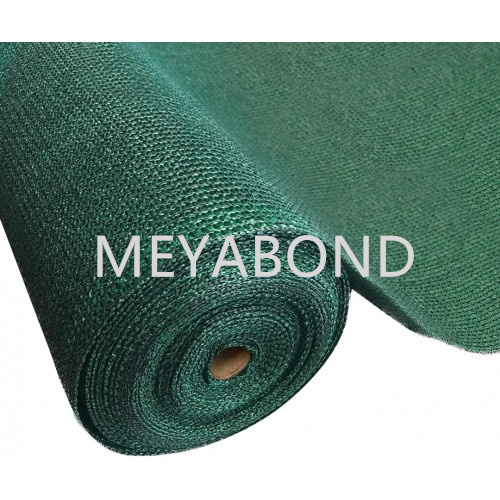Maximizing Your Harvest Efficiency with Hay Bale Net Wrap: The Ultimate Guide
Maximizing Your Harvest Efficiency with Hay Bale Net Wrap: The Ultimate Guide
In the competitive world of agriculture, maximizing harvest efficiency is critical for farmers aiming to increase yields and minimize losses. One innovative solution that has emerged in recent years is the use of hay bale net wrap. This article delves into the significance of hay bale net wrap, its benefits, and how it can transform your harvesting process.
Table of Contents
- What is Hay Bale Net Wrap?
- Benefits of Hay Bale Net Wrap
- Types of Hay Bale Net Wrap
- How to Choose the Right Net Wrap for Your Needs
- How to Use Hay Bale Net Wrap Effectively
- Tips for Maximizing Harvest Efficiency with Hay Bale Net Wrap
- Common Misconceptions About Hay Bale Net Wrap
- FAQs about Hay Bale Net Wrap
- Conclusion
What is Hay Bale Net Wrap?
Hay bale net wrap is a protective covering designed to encase bales of hay, silage, or straw. Made from durable, high-density polyethylene materials, this wrapping method ensures that the bales maintain their shape and quality during storage and transport. Unlike traditional twine, net wrap provides more comprehensive coverage and reduces the risk of spoilage, mold, and nutrient loss.
The Importance of Hay Bale Net Wrap in Modern Agriculture
As farmers face increasing pressures from climate change, labor shortages, and the need for sustainable practices, hay bale net wrap offers a practical solution to many of these challenges. By preserving the quality of forage and streamlining the harvesting process, net wrap technology plays a crucial role in modern agricultural practices.
Benefits of Hay Bale Net Wrap
Utilizing hay bale net wrap comes with numerous advantages that can significantly impact your harvest efficiency. Here are some key benefits:
1. Enhanced Durability and Protection
Net wrap provides superior protection against environmental factors such as rain, snow, and UV rays. This durability ensures that the forage remains intact and retains its nutritional value over time.
2. Improved Airflow
Unlike traditional twine, net wrap allows for better airflow around the bales. This ventilation minimizes the risk of mold and spoilage, which can lead to significant nutrient loss.
3. Faster Handling and Efficiency
Net-wrapped bales are easier and quicker to handle, thanks to their uniform shape and reduced weight compared to traditional twine-wrapped bales. This efficiency translates to faster loading and unloading times on the farm.
4. Cost-Effectiveness
While the initial investment in net wrap might be higher than twine, the long-term benefits often outweigh these costs. By preserving forage quality and reducing waste, net wrap can lead to substantial savings over time.
Types of Hay Bale Net Wrap
Understanding the different types of hay bale net wrap available can help you make informed decisions. Here are the main categories:
1. Standard Net Wrap
This is the most commonly used net wrap, suitable for a variety of crops such as grass, alfalfa, and straw. Standard net wrap offers balanced protection and is ideal for most farming operations.
2. Heavy-Duty Net Wrap
Heavy-duty options are designed for extreme conditions. These wraps are thicker and provide additional protection against harsh weather and rough handling.
3. Biodegradable Net Wrap
For environmentally conscious farmers, biodegradable net wrap provides a sustainable alternative. Made from natural materials, this type of wrap decomposes over time, reducing waste and environmental impact.
How to Choose the Right Net Wrap for Your Needs
Selecting the appropriate hay bale net wrap is crucial for maximizing efficiency and protecting your harvest. Consider the following factors:
1. Crop Type
Different crops may require different types of net wrap. Assess the specific needs of your forage, including moisture content and susceptibility to spoilage.
2. Environmental Conditions
If your farm is located in an area with extreme weather conditions, opt for heavy-duty net wrap to ensure adequate protection against the elements.
3. Budget
While it's essential to invest in quality net wrap, consider your budget and the potential return on investment. Analyze the cost-effectiveness of various options based on your harvesting practices.
How to Use Hay Bale Net Wrap Effectively
To derive the maximum benefit from hay bale net wrap, proper usage is essential. Here are some guidelines:
1. Pre-Processing
Before wrapping, ensure that the hay is properly dried to the appropriate moisture level. Wrapping wet hay can lead to spoilage and reduced quality.
2. Wrapping Technique
Utilize a reliable wrapping machine and follow the manufacturer’s guidelines for tension and speed. Proper application ensures a tight seal and optimal protection.
3. Storage
Store wrapped bales in a dry, shaded area whenever possible. This additional layer of protection will further preserve the bales' integrity and nutritional value.
Tips for Maximizing Harvest Efficiency with Hay Bale Net Wrap
To ensure that you get the most out of your hay bale net wrap, consider these tips:
1. Monitor Bale Quality
Regularly inspect wrapped bales for any signs of damage or spoilage. Early detection can prevent larger issues down the line.
2. Optimize Field Management
Practice good field management techniques, such as crop rotation and proper fertilization, to enhance the quality of the hay being harvested.
3. Train Your Team
Ensure that your team is well-trained in the operation of wrapping equipment and understands the importance of using net wrap effectively.
Common Misconceptions About Hay Bale Net Wrap
Despite its benefits, there are several misconceptions about hay bale net wrap that can hinder its adoption among farmers:
1. It’s Only for Large Farms
Many believe that net wrap is only suitable for large agricultural operations. However, farmers of all sizes can benefit from its efficiency and protection.
2. It’s Too Expensive
While there may be a higher upfront cost, the long-term savings due to reduced waste and improved forage quality make it a cost-effective choice.
3. Net Wrap Causes Waste
Some think that net wrap contributes to waste due to its synthetic materials. However, opting for biodegradable options can mitigate this concern.
FAQs about Hay Bale Net Wrap
1. How long can hay bales last when wrapped in net wrap?
When properly wrapped and stored, hay bales can last for several months to a year without significant loss in quality.
2. Can I use net wrap with any type of baler?
Most modern balers are compatible with net wrap, but it's essential to check the manufacturer's specifications to ensure compatibility.
3. What is the typical width of hay bale net wrap?
Net wrap typically comes in widths ranging from 48 to 60 inches, but it's advisable to select a width that suits your baler and bales.
4. Is there a difference between net wrap and twine?
Yes, net wrap provides better protection and airflow than twine, which can lead to improved quality and reduced spoilage.
5. How do I dispose of used net wrap?
Used net wrap can be recycled in many areas. Check local guidelines for recycling options, or consider composting biodegradable varieties.
Conclusion
In conclusion, hay bale net wrap presents an innovative solution for farmers looking to maximize their harvest efficiency. By understanding the benefits, types, and proper usage of net wrap, farmers can enhance their productivity, preserve forage quality, and ultimately achieve a more successful harvest. With careful selection and management, hay bale net wrap is an invaluable asset in modern agriculture, capable of transforming the way we approach harvesting and hay management.
Key words:
Related News
CONTACT US
Email: sales8@meyabond.com
Tel: +8618911966213
No.3 Yard, ZhongHe Road, 100071,FengTai District, Beijing, China
Email: sales8@meyabond.com
Tel: +8618911966213
No.3 Yard, ZhongHe Road, 100071,FengTai District, Beijing, China
















